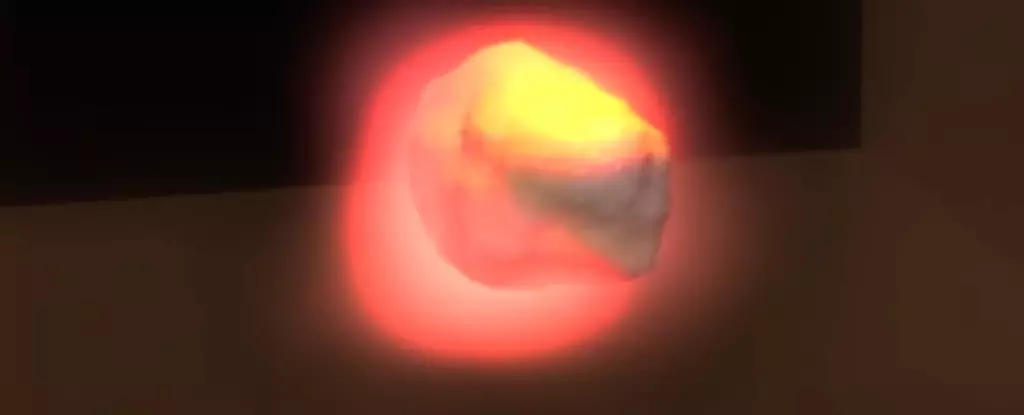NASA’s Curiosity rover continues to reshape our understanding of the red planet, providing tantalizing clues about the possibility of life beyond Earth. Recent findings indicate the discovery of the largest organic molecules ever detected on Mars, a breakthrough that propels the ongoing quest for extraterrestrial life into new dimensions. These findings echo the significance of organic life on Earth, where such molecules are foundational to biological systems. By examining the carbon-containing compounds unearthed from an ancient Martian lakebed, scientists embark on an intellectual exploration to discern if life once flourished in this alien environment.
Molecules of Interest: A Glimpse into Martian Biology
Among the notable finds is a range of hydrocarbons, specifically alkanes, including decane and dodecane, with impressive carbon atom counts. Understanding the chemical makeup of these alkanes allows scientists to draw parallels to fatty acids—essential components for building cellular structures on Earth. This association, albeit preliminary, is groundbreaking in the Martian context. The very makeup of these molecules suggests that if microbial life ever existed, these hydrocarbons might be vestiges of their biological processes. The unique geological history indicated by the composition of these organic compounds serves as a critical piece for a larger puzzle regarding Mars’ past habitability.
Moreover, the identification of these compounds comes from a 3.7-billion-year-old geological sample dubbed Cumberland, which Curiosity collected from a presumed lakebed located within Gale Crater. This context is crucial. Lakes are synonymous with life on Earth, as they provide a stable and nutrient-rich environment for biological entities. By recognizing that such conditions may have existed on Mars, researchers ignite hope for confirming evidence of ancient microbial life.
The Role of Advanced Instrumentation
The remarkable capabilities of the Sample Analysis at Mars (Sam) instrument on Curiosity opened new avenues for planetary science. Contrary to conventional search methods aiming to detect amino acids—the essential constituents of proteins—Curiosity’s unexpected fingerprint left on Martian geology highlights the dynamic nature of scientific inquiry. The exploratory journey has not only expanded our horizons regarding potential Martian biochemistry but also illustrates how scientific endeavors can lead to serendipitous discoveries.
While current instruments aboard the rover are impressive, the limits of their size and capabilities remind us of the tools needed to bridge the gap in our understanding of extraterrestrial life. With ongoing questions about the molecular origin—whether biotic or abiotic—scientists stress the need for superior analytical equipment available only in terrestrial laboratories. This realization fuels aspirations for the Mars Sample Return mission, a collaborative effort between NASA and the European Space Agency, which aspires to transport Martian samples back to Earth.
Budgetary Constraints and Scientific Aspirations
However, the road to advancing our extraterrestrial knowledge is fraught with challenges. Recently, increased budget concerns regarding the Mars Sample Return mission prompted an independent review board to cast a critical eye on the project, urging a re-evaluation of its funded approach. Amid these deliberations, scientists face the pressing challenge of effectively communicating the importance of their work to policymakers. Ensuring the viability of the mission is paramount, as time is of the essence. Each day, Mars becomes more distant in both our timeline and technological reach.
A sense of urgency resonates among researchers hoping to analyze Martian samples that may harbor more complex organic structures, indicative of life, as yet unseen. The anticipation surrounding what lies in these samples is palpable; perhaps they contain dynamic chains of hydrocarbons and other organic entities interlinked in a manner that speaks of life’s emergence in a distinct alien world.
The Geological Tapestry of Gale Crater
Yellowknife Bay, where the Cumberland sample was collected, is deemed a geologically rich site that encapsulates a narrative of aqueous processes indicative of ancient lakes. The rocky formations present in this area carry signatures of sedimentation akin to that which occurs on Earth. As geological formations furnish context to the findings, researchers become increasingly aware of the intricate interplay between geological and potential biological processes on Mars.
The distinct possibility that fatty acids might be part of the ancient chemical puzzle deepens the intrigue. Drawing from Earth’s biological history, scientists must navigate the complexity of abiotic and biotic sources of molecular formation. Understanding the context and origin of such molecules is key to interpreting the implications for ancient Martian life.
The rich synthesis of discoveries made by the Curiosity rover reinforces the notion that exploration is an ongoing dialogue between past and present. A treasure trove of data captured within Martian rocks will continue to evolve our understanding of not just Mars but the very essence of life itself. The quest for knowledge, fueled by insatiable curiosity, propels humanity to dream of worlds beyond our own, ever in search of the primordial question: Are we alone in the cosmos?


Leave a Reply